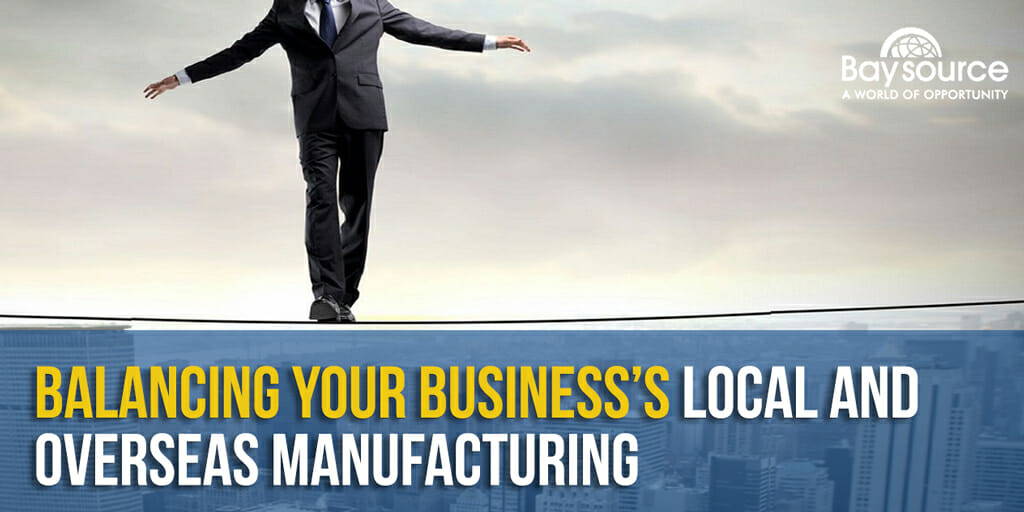
You often hear people talk about balance. There are many books and websites dedicated to helping you balance your work life and your home life. Others focus on balance in your relationships and with your hobbies. When it comes to running your own business, balance is also important. If you’re considering overseas manufacturing, you do have to make certain that you’re keeping your business balanced in terms of local versus overseas work. Expanding or moving too much overseas too quickly can be a problem. A number of businesses have failed or have put themselves in a precarious situation simply because they didn’t remain.
What Does “Balanced” Mean in this Case?
In this situation, being balanced means you want to be able to react quickly if something unexpected were to happen regarding your outsourced manufacturing partner. If a person is standing off-balanced with one foot on a rug and that rug is pulled away, they will likely fall. If they’re in a more balanced stance, they usually don’t. Your business needs to have its weight equally distributed so that it doesn’t fall. That means if you were to lose your overseas partner suddenly, you’d be able to recover quickly enough that it wouldn’t severely impact your bottom line. If you don’t outsource enough, though, you may miss out on a good amount of savings.
Moving All of Your Manufacturing Overseas
You might take that to mean that you shouldn’t move all of your manufacturing overseas, which isn’t necessarily the case. Outsourcing your manufacturing can save you a large amount of money, even when you factor in shipping costs. That saving is often too great to pass up. However, don’t outsource all of your manufacturing right away. Work with a partner company on one product or product line first, then scale your outsourcing once you’ve determined that the product quality, shipping time, and other factors fit your needs.
Even after you’ve determined that your overseas manufacturing partner can handle everything you need, it’s always a good idea to have a local backup. You should have a number of disaster scenarios written that cover how to deal with emergencies. One of these should cover how you would handle the sudden loss of your overseas partner. Include local manufacturers you could reach out to, especially those you’ve worked before. If you’re the man standing on the rug, these backup manufacturers are a handle on the wall you can grab when that rug is pulled.
Financial Balance
You also need to make sure you’re financially balanced. This is another reason why you may not want to fully commit to overseas manufacturing right away. First, determine that all of your needs will be met by outsourcing. This way, if it does fail, you haven’t tied up a large amount of money in the venture. You’ll be able to recover and redirect your finances towards another manufacturing option.
What Does Balance Mean for You?
Every business is different, and each situation presents new challenges. While you may determine that your business is in balance at one point in time, several months later you may realize it’s not. Balance is something you need to evaluate regularly to determine if you can still quickly react to changes. If you see that your business can’t, it’s time to make some changes.




Follow Us